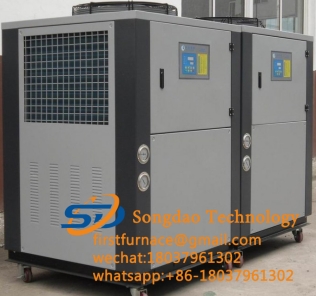- 26
- Oct
Solutions to the phenomenon of the compressor’s hydraulic impact cylinder in the industrial chiller
Solutions to the phenomenon of the compressor’s hydraulic impact cylinder in the industrial chiller
Dealing with liquid shock accidents should be made promptly. In serious cases, emergency vehicle handling should be carried out. When a slight wet stroke occurs in a single-stage compressor, only the compressor suction valve should be closed, the liquid supply valve of the evaporation system should be closed, or the liquid in the container should be reduced. Face. And pay attention to the oil pressure and exhaust temperature. When the temperature rises to 50℃, you can try to open the large suction valve. The editor tells everyone that if the exhaust temperature continues to rise, you can continue to open it. If the temperature drops, turn it down again.

For the “wet stroke” of a two-stage compressor, the treatment method of the low-pressure stage wet stroke is the same as that of a single-stage compressor. But when there is a large amount of ammonia rushing into the cylinder, the high-pressure compressor can be used to depressurize and evacuate through the intercooler. The editor tells everyone that before pumping down, the liquid in the intercooler should be drained into the drain bucket, and then the pressure should be reduced. The cylinder cooling water jacket and oil should be cooled before the pressure is reduced: the cooling water in the device should be drained or boiled. valve.
When the liquid level of the intercooler is too high, the high-pressure compressor exhibits a “wet stroke”. The treatment method should first turn off the suction valve of the low-pressure compressor, and then turn off the suction valve of the high-pressure compressor and the liquid supply valve of the intercooler. The editor tells everyone that when necessary, discharge the ammonia in the intercooler into the discharge bucket. If the high-pressure compressor is severely frosted, the low-pressure compressor should be stopped. The subsequent treatment method is the same as that of the single-stage.
